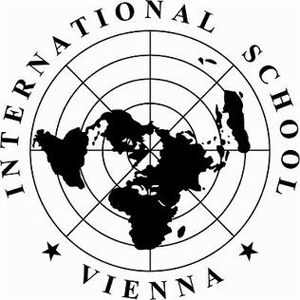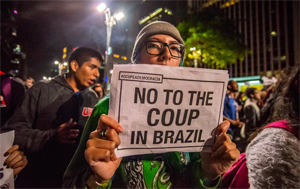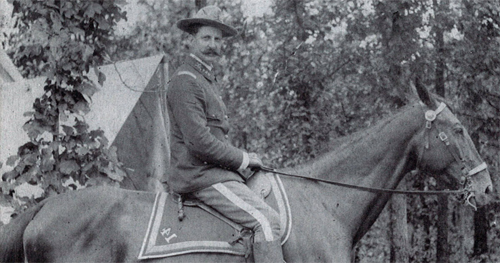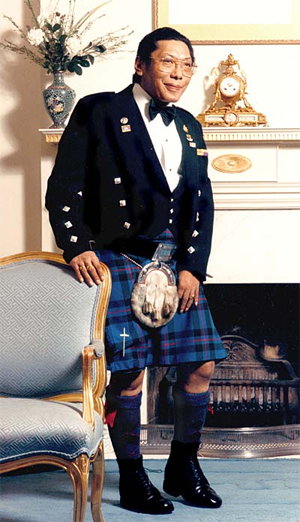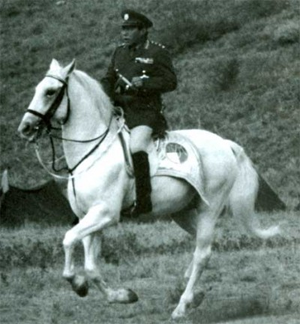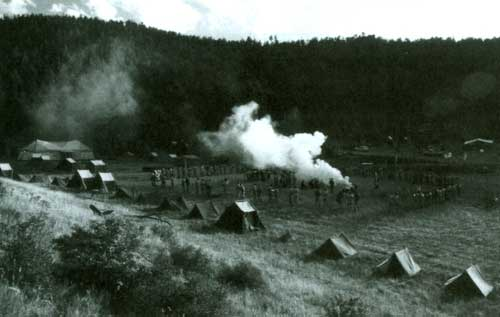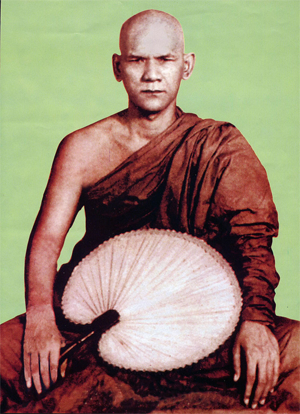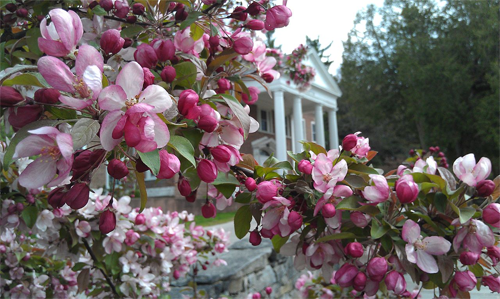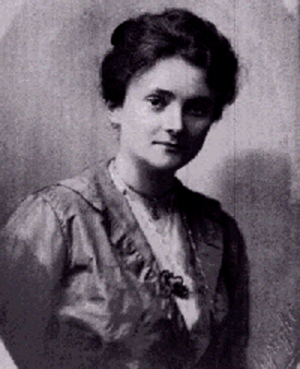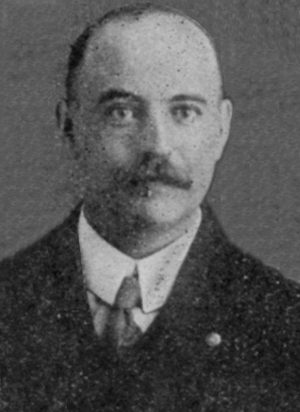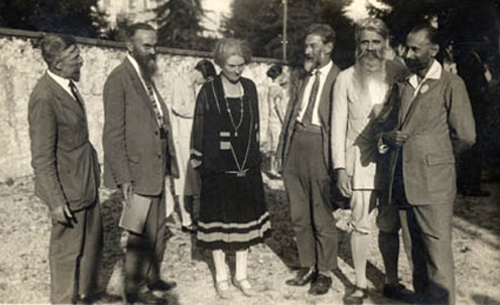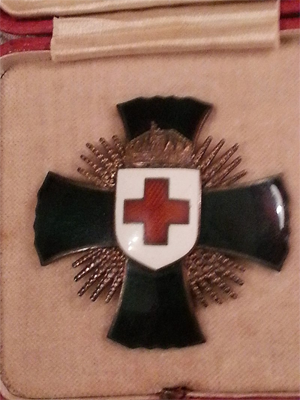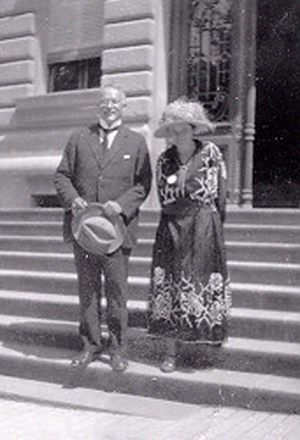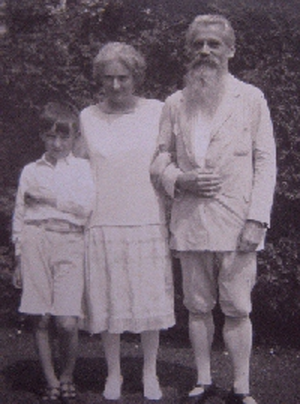Maria Montessoriby Wikipedia
Accessed: 8/16/19
NOTICE: THIS WORK MAY BE PROTECTED BY COPYRIGHTYOU ARE REQUIRED TO READ
THE COPYRIGHT NOTICE AT THIS LINK BEFORE YOU READ THE FOLLOWING WORK, THAT IS AVAILABLE SOLELY FOR PRIVATE STUDY, SCHOLARSHIP OR RESEARCH PURSUANT TO 17 U.S.C. SECTION 107 AND 108. IN THE EVENT THAT THE LIBRARY DETERMINES THAT UNLAWFUL COPYING OF THIS WORK HAS OCCURRED, THE LIBRARY HAS THE RIGHT TO BLOCK THE I.P. ADDRESS AT WHICH THE UNLAWFUL COPYING APPEARED TO HAVE OCCURRED. THANK YOU FOR RESPECTING THE RIGHTS OF COPYRIGHT OWNERS.
Schocken books had been started by my grandfather, my mother’s father, originally in Germany before the war. And then in New York City starting in about 1946.
Q. What was his name?
A. Salman Schocken.
Q. And what was the nature?
A. It started as publishing books of Jewish interest, both some classics and some contemporary writing about Judaism. He was very close with Martin Buber, and published some of Buber’s writings, and other important Jewish thought leaders of the 30s, 40s, 50s. And then after he died, my father, Herzl Rome, took it over and expanded the list so that it continued to publish Judaica, but it broadened to become a general publisher of trade books. Not so much fiction, but a lot in different academic disciplines, and
my mother introduced one of the first important series on women’s studies, and also a series on education. She was the person who brought back the writings of Maria Montessori, who had been virtually forgotten at that time.-- A Conversation With David Rome, by The Chronicles
It is essential to realize that while the outer forms of irrationalism had penetrated political Establishments, the interior content of Underground systems of thought had begun to penetrate academies.
The widest breach in the rationalist front was inevitably in the terrain of psychology and psychiatry, because of the nature of the subjects studied and the historical circumstances in which that study took place. Theories deriving from psychoanalysis, or developing parallel with it, have absorbed some of the same influences.
Of these the most significant has been the New Education.The builders of the brave new worlds of the Progressive Underground were most naturally concerned with the education of the children who would one day inhabit their Paradise. Doctrines of "spiritual revolution" found their natural outcome in attempts at reeducation; of "spiritual evolution," a good analogy in the educational progress of the child.
The pioneer of the altered attitude to education was Maria Montessori (1869-1952) whose vision of a race of Superchildren bordered on the apocalyptic. "The outcome ... is the New Child, a superior being, giving promise of a New Humanity, with powers of mind and spirit hitherto unsuspected." Many of the developments already discussed were part of the movement toward the New Child. In Germany, Langbehn's Rembrandt als Erzieher was followed by Carl Gotze's Child as Artist and Gotze's educational work based on the principle that the child was a natural creative artist who must have his powers liberated through education. The youth movements, and the groups with which Rolf Gardiner and the Springhead Ring were in contact, also formed parts of the movement for "liberated" education -- that is, designed to evoke the powers of the child rather than imposing adult standards upon him. In America the "Junior Republics" in which children governed themselves were set up. The idea was also tried in England with a "little Commonwealth" in Dorset. The Order of Woodcraft Chivalry and the Kibbo Kift were very much part of the educational movement and embodied a commitment to reestablishing "natural man." [141
The theories of the psychologists provided added impetus. Freud's conclusion that neuroses were produced by repressions fitted excellently with the ideas of those who wanted to recreate natural man; while
Jung was a central figure in the minds of educational reformers after the First World War, as his psychology was particularly favorable to ideas of "spiritual evolution." Jung accepted
the Biogenetic Law and may have been more influenced by his contact with
G. Stanley Hall than he cared to admit. He lectured at conferences of the New Educators in 1923 and 1924, and his views on educational development very closely coincide, for example, with those of
Ernest Westlake of
the Order of Woodcraft Chivalry.Occultists and religious reformers also concerned themselves with the children of the future -- for they, after all, were the custodians of the idea of "spiritual progress." Johannes Muller and Heinrich Lhotzky both put forward educational theories. The leading exponent of occult ideas of education has been Rudolf Steiner; and in 1962 there were almost seventy schools run on
Anthroposophical principles in various parts of the world.
Steiner himself also lectured to the New Educators, and (according to the Manchester Guardian) a conference attended by Steiner at Oxford in 1922 found in him "its central point." Steiner's principles were based on his occult theories, and it is easy to see how these could coincide with less esoteric ideas of evolution. "We must know on what part of the human being we have especially to work at a certain age, and how we can work upon it in the proper way," he wrote. "We can awaken what is in the child, but we cannot implant a content into him." [142] Such a coincidence of ideas makes it comprehensible that
the organization that carried the flag of the New Education throughout Europe sprang from the Theosophical Society.
In 1914 a committee of Theosophists under Bishop George Arundale of the Liberal Catholic Church -- a former tutor of Krishnamurti -- decided to start a Theosophical School. The site chosen was -- where else? -- Letchworth Garden City. To the Theosophical tenets of karma and reincarnation were added the more generally "progressive" ideas of Arts and Crafts, Montessori theory, and Dalcroze Eurythmics. A general vegetarian diet was the rule and the pupils governed themselves through a "moot." The Theosophist Beatrice Ensor, an inspector of schools, was inspired by the Letchworth experiment and founded the Theosophical Fraternity of Education in 1915. She established a magazine to propagate enlightened ideas; and in 1921 she held a meeting of her fraternity in Letchworth, when it was decided that next year they should organize a general conference of educators at Calais which the Theosophists would run, although themselves keeping in the background. In 1921 the Calais conference was held, the name of the Theosophical paper changed to The New Era, and the New Educational Fellowship established. Its first object was "to prepare the child to seek and to realize in his own life the supremacy of the spirit." [143] The New Era secured contributions from both occultists and educators. Beatrice Ensor shared the editorship with the celebrated
A. S. Neill, and the entire spectrum of the Progressive Underground contributed to its pages. There was Isabelle Pagan of Racial Cleavage and Cloudesley Brereton, who wrote for
G. R. S. Mead's Theosophical magazine Quest. There were articles by the Jungian therapist
Esther Harding and the ubiquitous
Patrick Geddes. The president of the Arts and Crafts Association joined the leader of a new French youth movement and Wilhelm Stekel -- a friend of Neill -- in a remarkable synthesis of "advanced opinion." Beatrice Ensor and the Theosophists were never quite submerged by the more practical educators. In April 1923, Mrs. Ensor contributed an editorial that noted approvingly the efforts of
A. Conan Doyle and
E. L. Gardner to capture the fairies.
We have recently come across other children who see fairies, and we are trying to obtain more photos. It is a very beautiful idea that Nature's laws are operated through the cooperation of beings who, while not belonging to our human order of evolution, are nevertheless working side by side with humanity in the building up of our world ... it would seem as though we were now beginning to reawaken at a higher level the sense organs which enabled the folk of yore to see clairvoyantly "the little people." [144]
-- The Occult Establishment, by James Webb
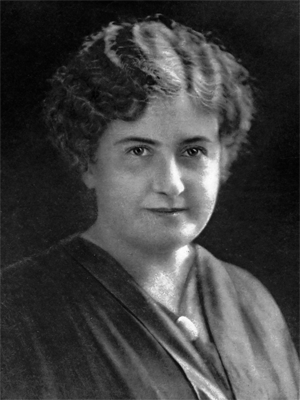
Maria Montessori
Portrait of Montessori, artist and date unknown
Born Maria Tecla Artemisia Montessori
August 31, 1870
Chiaravalle, Marche, Italy
Died May 6, 1952 (aged 81)
Noordwijk, South Holland, Netherlands
Resting place Noordwijk, Netherlands
Nationality Italian
Education University of Rome La Sapienza Medical School
Occupation Physician and educator
Known for Founder of the Montessori method of education
Children Mario Montessori Sr.
Signature
Maria Tecla Artemisia Montessori (Italian pronunciation: [maˈriːa montesˈsɔːri]; August 31, 1870 – May 6, 1952) was an Italian physician and educator best known for the philosophy of education that bears her name, and her writing on scientific pedagogy. At an early age, Montessori broke gender barriers and expectations when she enrolled in classes at an all-boys technical school, with hopes of becoming an engineer. She soon had a change of heart and began medical school at the Sapienza University of Rome, where she graduated – with honors – in 1896. Her educational method is still in use today in many public and private schools throughout the world.
Life and career
Birth and familyMontessori was born on August 31, 1870 in Chiaravalle, Italy. Her father, Alessandro Montessori, 33 years old at the time, was an official of the Ministry of Finance working in the local state-run tobacco factory. Her mother, Renilde Stoppani, 25 years old, was well educated for the times and was the great-niece of Italian geologist and paleontologist Antonio Stoppani.[1][2] While she did not have any particular mentor, she was very close to her mother who readily encouraged her. She also had a loving relationship with her father, although he disagreed with her choice to continue her education.[3]
1883–1896: Education
Early educationThe Montessori family moved to Florence in 1873 and then to Rome in 1875 because of her father's work. Montessori entered a public elementary school at the age of 6 in 1876. Her early school record was "not particularly noteworthy",[4] although she was awarded certificates for good behavior in the 1st grade and for "lavori donneschi", or "women's work", the next year.[5]
Secondary schoolIn 1883[6] or 1884,[7] at the age of 13, Montessori entered a secondary, technical school, Regia Scuola Tecnica Michelangelo Buonarroti, where she studied Italian, arithmetic, algebra, geometry, accounting, history, geography, and sciences. She graduated in 1886 with good grades and examination results. That year, at the age of 16, she continued at the technical institute Regio Istituto Tecnico Leonardo da Vinci, studying Italian, mathematics, history, geography, geometric and ornate drawing, physics, chemistry, botany, zoology, and two foreign languages. She did well in the sciences and especially in mathematics.
She initially intended to pursue the study of engineering upon graduation, an unusual aspiration for a woman in her time and place. However, by the time she graduated in 1890 at the age of 20, with a certificate in physics–mathematics, she had decided to study medicine instead, an even more unlikely pursuit given cultural norms at the time.[8]
University of Rome—Medical schoolMontessori moved forward with her intention to study medicine. She appealed to Guido Baccelli, the professor of clinical medicine at the University of Rome, but was strongly discouraged. Nonetheless, in 1890, she enrolled in the University of Rome in a degree course in natural sciences, passing examinations in botany, zoology, experimental physics, histology, anatomy, as well as general and organic chemistry, and earning her diploma di licenza in 1892. This degree, along with additional studies in Italian and Latin, qualified her for entrance into the medical program at the University in 1893.[9]
She was met with hostility and harassment from some medical students and professors because of her gender. Because her attendance of classes with men in the presence of a naked body was deemed inappropriate, she was required to perform her dissections of cadavers alone, after hours. She resorted to smoking tobacco to mask the offensive odor of formaldehyde.[10] Montessori won an academic prize in her first year, and in 1895 secured a position as a hospital assistant, gaining early clinical experience. In her last two years she studied pediatrics and psychiatry, and worked in the pediatric consulting room and emergency service, becoming an expert in pediatric medicine. Montessori graduated from the University of Rome in 1896 as a doctor of medicine. Her thesis was published in 1897 in the journal Policlinico. She found employment as an assistant at the University hospital and started a private practice.[11][12]
1896–1901: Early career and familyFrom 1896 to 1901, Montessori worked with and researched so-called "phrenasthenic" children—in modern terms, children experiencing some form of mental retardation, illness, or disability. She also began to travel, study, speak, and publish nationally and internationally, coming to prominence as an advocate for women's rights and education for mentally disabled children.[13]
On March 31, 1898, her only child – a son named Mario Montessori (March 31, 1898 – 1982) was born.[14] Mario Montessori was born out of her love affair with Giuseppe Montesano, a fellow doctor who was co-director with her of the Orthophrenic School of Rome. If Montessori married, she would be expected to cease working professionally; instead of getting married, Montessori decided to continue her work and studies. Montessori wanted to keep the relationship with her child's father secret under the condition that neither of them would marry anyone else. When the father of her child fell in love and subsequently married, Montessori was left feeling betrayed and decided to leave the university hospital and place her son into foster care with a family living in the countryside opting to miss the first few years of his life. She would later be reunited with her son in his teenage years, where he proved to be a great assistant in her research.[3][15]
Work with mentally disabled childrenAfter graduating from the University of Rome in 1896, Montessori continued with her research at the University's psychiatric clinic, and in 1897 she was accepted as a voluntary assistant there. As part of her work, she visited asylums in Rome where she observed children with mental disabilities, observations which were fundamental to her future educational work. She also read and studied the works of 19th-century physicians and educators Jean Marc Gaspard Itard and Édouard Séguin, who greatly influenced her work. Maria was intrigued by Itard's ideas and created a far more specific and organized system for applying them to the everyday education of children with disabilities. When she discovered the works of Jean Itard and Édouard Séguin they gave her a new direction in thinking and influenced her to focus on children with learning difficulties. Also in 1897, Montessori audited the University courses in pedagogy and read "all the major works on educational theory of the past two hundred years".[16]
Public advocacyIn 1897 Montessori spoke on societal responsibility for juvenile delinquency at the National Congress of Medicine in Turin. In 1898, she wrote several articles and spoke again at the First Pedagogical Conference of Turin, urging the creation of special classes and institutions for mentally disabled children, as well as teacher training for their instructors.[17] In 1899 Montessori was appointed a councilor to the newly formed National League for the Protection of Retarded Children, and was invited to lecture on special methods of education for retarded children at the teacher training school of the College of Rome. That year Montessori undertook a two-week national lecture tour to capacity audiences before prominent public figures.[18] She joined the board of the National League and was appointed as a lecturer in hygiene and anthropology at one of the two teacher-training colleges for women in Italy.[19]
Orthophrenic SchoolIn 1900 the National League opened the Scuola Magistrale Ortofrenica, or Orthophrenic School, a "medico-pedagogical institute" for training teachers in educating mentally disabled children with an attached laboratory classroom. Montessori was appointed co-director.[20] 64 teachers enrolled in the first class, studying psychology, anatomy and physiology of the nervous system, anthropological measurements, causes and characteristics of mental disability, and special methods of instruction. During her two years at the school, Montessori developed methods and materials which she would later adapt to use with mainstream children.[21]
The school was an immediate success, attracting the attention of government officials from the departments of education and health, civic leaders, and prominent figures in the fields of education, psychiatry, and anthropology from the University of Rome.[22] The children in the model classroom were drawn from ordinary schools but considered "uneducable" due to their deficiencies. Some of these children later passed public examinations given to so-called "normal" children.[23]
1901–1906: Further studiesIn 1901, Montessori left the Orthophrenic School and her private practice, and in 1902 she enrolled in the philosophy degree course at the University of Rome. (Philosophy at the time included much of what we now consider psychology.) She studied theoretical and moral philosophy, the history of philosophy, and psychology as such, but she did not graduate. She also pursued independent study in anthropology and educational philosophy, conducted observations and experimental research in elementary schools, and revisited the work of Itard and Séguin, translating their books into handwritten Italian. During this time she began to consider adapting her methods of educating mentally disabled children to mainstream education.[24]
Montessori's work developing what she would later call "scientific pedagogy" continued over the next few years. Still in 1902, Montessori presented a report at a second national pedagogical congress in Naples. She published two articles on pedagogy in 1903, and two more the following year. In 1903 and 1904, she conducted anthropological research with Italian schoolchildren, and in 1904 she was qualified as a free lecturer in anthropology for the University of Rome. She was appointed to lecture in the Pedagogic School at the University and continued in the position until 1908. Her lectures were printed as a book titled Pedagogical Anthropology in 1910.[25]
1906–1911: Casa dei Bambini and the spread of Montessori's ideas
The first CasaIn 1906 Montessori was invited to oversee the care and education of a group of children of working parents in a new apartment building for low-income families in the San Lorenzo district in Rome. Montessori was interested in applying her work and methods to mentally normal children, and she accepted.[26] The name Casa dei Bambini, or Children's House, was suggested to Montessori, and the first Casa opened on January 6, 1907, enrolling 50 or 60 children between the ages of two or three and six or seven.[27]
At first, the classroom was equipped with a teacher's table and blackboard, a stove, small chairs, armchairs, and group tables for the children, and a locked cabinet for the materials that Montessori had developed at the Orthophrenic School. Activities for the children included personal care such as dressing and undressing, care of the environment such as dusting and sweeping, and caring for the garden. The children were also shown the use of the materials Montessori had developed.[28] Montessori herself, occupied with teaching, research, and other professional activities, oversaw and observed the classroom work, but did not teach the children directly. Day-to-day teaching and care were provided, under Montessori's guidance, by the building porter's daughter.[29]
In this first classroom, Montessori observed behaviors in these young children which formed the foundation of her educational method. She noted episodes of deep attention and concentration, multiple repetitions of activity, and a sensitivity to order in the environment. Given free choice of activity, the children showed more interest in practical activities and Montessori's materials than in toys provided for them, and were surprisingly unmotivated by sweets and other rewards. Over time, she saw a spontaneous self-discipline emerge.[30]
Based on her observations, Montessori implemented a number of practices that became hallmarks of her educational philosophy and method. She replaced the heavy furniture with child-sized tables and chairs light enough for the children to move, and placed child-sized materials on low, accessible shelves. She expanded the range of practical activities such as sweeping and personal care to include a wide variety of exercises for care of the environment and the self, including flower arranging, hand washing, gymnastics, care of pets, and cooking.[31] She also included large open air sections in the classroom encouraging children to come and go as they please in the room's different areas and lessons. In her book[32] she outlines a typical winter's day of lessons, starting at 09:00 am and finishing at 04:00 pm:
• 9–10. Entrance. Greeting. Inspection as to personal cleanliness. Exercises of practical life; helping one another to take off and put on the aprons. Going over the room to see that everything is dusted and in order. Language: Conversation period: Children give an account of the events of the day before. Religious exercises.
• 10–11. Intellectual exercises. Objective lessons interrupted by short rest periods. Nomenclature, Sense exercises.
• 11–11:30. Simple gymnastics: Ordinary movements done gracefully, normal position of the body, walking, marching in line, salutations, movements for attention, placing of objects gracefully.
• 11:30–12. Luncheon: Short prayer.
• 12–1. Free games.
• 1–2. Directed games, if possible, in the open air. During this period the older children in turn go through with the exercises of practical life, cleaning the room, dusting, putting the material in order. General inspection for cleanliness: Conversation.
• 2–3. Manual work. Clay modelling, design, etc.
• 3–4. Collective gymnastics and songs, if possible in the open air. Exercises to develop forethought: Visiting, and caring for, the plants and animals.
She felt by working independently children could reach new levels of autonomy and become self-motivated to reach new levels of understanding. Montessori also came to believe that acknowledging all children as individuals and treating them as such would yield better learning and fulfilled potential in each particular child.[32] She continued to adapt and refine the materials she had developed earlier, altering or removing exercises which were chosen less frequently by the children. Also based on her observations, Montessori experimented with allowing children free choice of the materials, uninterrupted work, and freedom of movement and activity within the limits set by the environment. She began to see independence as the aim of education, and the role of the teacher as an observer and director of children's innate psychological development.[31]
Spread of Montessori education in ItalyThe first Casa dei Bambini was a success, and a second was opened on April 7, 1907. The children in her programs continued to exhibit concentration, attention, and spontaneous self-discipline, and the classrooms began to attract the attention of prominent educators, journalists, and public figures.[33] In the fall of 1907, Montessori began to experiment with teaching materials for writing and reading—letters cut from sandpaper and mounted on boards, moveable cutout letters, and picture cards with labels. Four- and five-year-old children engaged spontaneously with the materials and quickly gained a proficiency in writing and reading far beyond what was expected for their age. This attracted further public attention to Montessori's work.[34] Three more Case dei Bambini opened in 1908, and in 1909 Italian Switzerland began to replace Froebellian methods with Montessori in orphanages and kindergartens.[35]
In 1909, Montessori held the first teacher training course in her new method in Città di Castello, Italy. In the same year, she described her observations and methods in a book titled Il Metodo della Pedagogia Scientifica Applicato All'Educazione Infantile Nelle Case Dei Bambini (The Method of Scientific Pedagogy Applied to the Education of Children in the Children's Houses).[36] Two more training courses were held in Rome in 1910, and a third in Milan in 1911. Montessori's reputation and work began to spread internationally as well, and around that time she gave up her medical practice to devote more time to her educational work, developing her methods, and training teachers.[37] In 1919 she resigned from her position at the University of Rome, as her educational work was increasingly absorbing all her time and interest.
1909–1915: International recognition and growth of Montessori educationAs early as 1909, Montessori's work began to attract the attention of international observers and visitors. Her work was widely published internationally, and spread rapidly. By the end of 1911, Montessori education had been officially adopted in public schools in Italy and Switzerland, and was planned for the United Kingdom.[38] By 1912, Montessori schools had opened in Paris and many other Western European cities, and were planned for Argentina, Australia, China, India, Japan, Korea, Mexico, Switzerland, Syria, the United States, and New Zealand. Public programs in London, Johannesburg, Rome, and Stockholm had adopted the method in their school systems.[39] Montessori societies were founded in the United States (the Montessori American Committee) and the United Kingdom (the Montessori Society for the United Kingdom).[40] In 1913 the first International Training Course was held in Rome, with a second in 1914.[41]
Montessori's work was widely translated and published during this period. Il Metodo della Pedagogia Scientifica was published in the United States as The Montessori Method: Scientific Pedagogy as Applied to Child Education in the Children's Houses, where it became a best seller.[42] British and Swiss editions followed. A revised Italian edition was published in 1913. Russian and Polish editions came out in 1913 as well, and German, Japanese, and Romanian editions appeared in 1914, followed by Spanish (1915), Dutch (1916), and Danish (1917) editions. Pedagogical Anthropology was published in English in 1913.[43] In 1914, Montessori published, in English, Doctor Montessori's Own Handbook, a practical guide to the didactic materials she had developed.[44]
Montessori in the United StatesMain article: Montessori in the United States
In 1911 and 1912, Montessori's work was popular and widely publicized in the United States, especially in a series of articles in McClure's Magazine, and the first North American Montessori school was opened in October 1911, in Tarrytown, New York. The inventor Alexander Graham Bell and his wife became proponents of the method and a second school was opened in their Canadian home.[45] The Montessori Method sold quickly through six editions.[42] The first International Training Course in Rome in 1913 was sponsored by the American Montessori Committee, and 67 of the 83 students were from the United States.[46] By 1913 there were more than 100 Montessori schools in the country.[47] Montessori traveled to the United States in December 1913 on a three-week lecture tour which included films of her European classrooms, meeting with large, enthusiastic crowds wherever she traveled.[48]
Montessori returned to the United States in 1915, sponsored by the National Education Association, to demonstrate her work at the Panama–Pacific International Exposition in San Francisco, California, and to give a third international training course. A glass-walled classroom was put up at the Exposition, and thousands of observers came to see a class of 21 students. Montessori's father died in November 1915, and she returned to Italy.[49]
Although Montessori and her educational approach were highly popular in the United States, she was not without opposition and controversy. Influential progressive educator William Heard Kilpatrick, a follower of American philosopher and educational reformer John Dewey, wrote a dismissive and critical book titled The Montessori Method Examined, which had a broad impact. The National Kindergarten Association was critical as well. Critics charged that Montessori's method was outdated, overly rigid, overly reliant on sense-training, and left too little scope for imagination, social interaction, and play.[50] In addition, Montessori's insistence on tight control over the elaboration of her method, the training of teachers, the production and use of materials, and the establishment of schools became a source of conflict and controversy. After she left in 1915, the Montessori movement in the United States fragmented, and Montessori education was a negligible factor in education in the United States until 1952.[51]
1915–1939: Further development of Montessori educationIn 1915, Montessori returned to Europe and took up residence in Barcelona, Spain. Over the next 20 years Montessori traveled and lectured widely in Europe and gave numerous teacher training courses. Montessori education experienced significant growth in Spain, the Netherlands, the United Kingdom, and Italy.
Spain (1915–1936)On her return from the United States, Montessori continued her work in Barcelona, where a small program sponsored by the Catalan government begun in 1915 had developed into the Escola Montessori, serving children from three to ten years old, and the Laboratori i Seminari de Pedagogia, a research, training, and teaching institute. A fourth international course was given there in 1916, including materials and methods, developed over the previous five years, for teaching grammar, arithmetic, and geometry to elementary school children from six to twelve years of age.[52] In 1917 Montessori published her elementary work in L'autoeducazionne nelle Scuole Elementari (Self-Education in Elementary School), which appeared in English as The Advanced Montessori Method.[53] Around 1920, the Catalan independence movement began to demand that Montessori take a political stand and make a public statement favoring Catalan independence, and she refused. Official support was withdrawn from her programs.[54] In 1924, a new military dictatorship closed Montessori's model school in Barcelona, and Montessori education declined in Spain, although Barcelona remained Montessori's home for the next twelve years. In 1933, under the Second Spanish Republic, a new training course was sponsored by the government, and government support was re-established. In 1934, she published two books in Spain, Psicogeometrica and Psicoarithemetica.[55] However, with the onset of the Spanish Civil War in 1936, political and social conditions drove Montessori to leave Spain permanently.[56]
The Netherlands (1917–1936)In 1917, Montessori lectured in Amsterdam, and the Netherlands Montessori Society was founded.[57] She returned in 1920 to give a series of lectures at the University of Amsterdam.[58] Montessori programs flourished in the Netherlands, and by the mid-1930s there were more than 200 Montessori schools in the country.[59] In 1935 the headquarters of the Association Montessori Internationale, or AMI, moved permanently to Amsterdam.[60]
The United Kingdom (1919–1936)Montessori education was met with enthusiasm and controversy in England between 1912 and 1914.[61] In 1919, Montessori came to England for the first time and gave an international training course which was received with high interest. Montessori education continued to spread in the United Kingdom, although the movement experienced some of the struggles over authenticity and fragmentation that took place in the United States.[62] Montessori continued to give training courses in England every other year until the beginning of World War II.[63]
Italy (1922–1934)In 1922, Montessori was invited to Italy on behalf of the government to give a course of lectures and later to inspect Italian Montessori schools. Later that year Benito Mussolini's Fascist government came to power in Italy. In December, Montessori came back to Italy to plan a series of annual training courses under government sponsorship, and in 1923, the minister of education Giovanni Gentile expressed his official support for Montessori schools and teacher training.[64] In 1924 Montessori met with Mussolini, who extended his official support for Montessori education as part of the national program.[65] A pre-war group of Montessori supporters, the Societa gli Amici del Metodo Montessori (Society of Friends of the Montessori Method) became the Opera Montessori (Montessori Society) with a government charter, and by 1926 Mussolini was made honorary president of the organization.[66] In 1927 Mussolini established a Montessori teacher training college, and by 1929 the Italian government supported a wide range of Montessori institutions.[67] However, from 1930 on, Montessori and the Italian government came into conflict over financial support and ideological issues, especially after Montessori's lectures on Peace and Education.[68] In 1932 she and her son Mario were placed under political surveillance.[69] Finally, in 1933, she resigned from the Opera Montessori, and in 1934 she left Italy. The Italian government ended Montessori activities in the country in 1936.[70]
Other countriesMontessori lectured in Vienna in 1923, and her lectures were published as Il Bambino in Famiglia, published in English in 1936 as The Child in the Family. Between 1913 and 1936 Montessori schools and societies were also established in France, Germany, Switzerland, Belgium, Russia, Serbia, Canada, India, China, Japan, Indonesia, Australia, and New Zealand.[71]
The Association Montessori InternationaleIn 1929, the first International Montessori Congress was held in Elsinore, Denmark, in conjunction with the Fifth Conference of the New Education Fellowship. At this event, Montessori and her son Mario founded the Association Montessori Internationale or AMI "to oversee the activities of schools and societies all over the world and to supervise the training of teachers."[72] AMI also controlled rights to the publication of Montessori's works and the production of authorized Montessori didactic materials. Early sponsors of the AMI included Sigmund Freud, Jean Piaget, and Rabindranath Tagore.[73]
PeaceIn 1932, Montessori spoke on Peace and Education at the Second International Montessori Congress in Nice, France; this lecture was published by the Bureau International d'Education, Geneva, Switzerland. In 1932, Montessori spoke at the International Peace Club in Geneva, Switzerland, on the theme of Peace and Education.[74] Montessori held peace conferences from 1932 to 1939 in Geneva, Brussels, Copenhagen, and Utrecht, which were later published in Italian as Educazione e Pace, and in English as Education and Peace.[75] In 1949, and again in 1950 and in 1951, Montessori was nominated for the Nobel Peace Prize, receiving a total of six nominations.[76]
Laren, the Netherlands (1936–1939)In 1936 Montessori and her family left Barcelona for England, and soon moved to Laren, near Amsterdam. Montessori and her son Mario continued to develop new materials here, including the knobless cylinders, the grammar symbols, and botany nomenclature cards.[77] In the context of rising military tensions in Europe, Montessori increasingly turned her attention to the theme of peace. In 1937, the 6th International Montessori Congress was held on the theme of "Education for Peace", and Montessori called for a "science of peace" and spoke about the role of education of the child as a key to the reform of society.[78] In 1938, Montessori was invited to India by the Theosophical Society to give a training course, and in 1939 she left the Netherlands with her son and collaborator Mario.[79]
1939–1946: Montessori in IndiaMain article: Montessori in India
An interest in Montessori had existed in India since 1913, when an Indian student attended the first international course in Rome, and students throughout the 1920s and 1930s had come back to India to start schools and promote Montessori education. The Montessori Society of India was formed in 1926, and Il Metodo was translated into Gujarati and Hindi in 1927.[80] By 1929, Indian poet Rabindranath Tagore had founded many "Tagore-Montessori" schools in India, and Indian interest in Montessori education was strongly represented at the International Congress in 1929.[81] Montessori herself had been personally associated with the Theosophical Society since 1907. The Theosophical movement, motivated to educate India's poor, was drawn to Montessori education as one solution.[82]
Internment in IndiaMontessori gave a training course at the Theosophical Society in Madras in 1939, and had intended to give a tour of lectures at various universities, and then return to Europe.[83] However, when Italy entered World War II on the side of the Germans in 1940, Britain interned all Italians in the United Kingdom and its colonies as enemy aliens. In fact only Mario Montessori was interned, while Montessori herself was confined to the Theosophical Society compound, and Mario was reunited with his mother after two months. The Montessoris remained in Madras and Kodaikanal until 1946, although they were allowed to travel in connection with lectures and courses.
Elementary material, cosmic education, and birth to threeDuring her years in India, Montessori and her son Mario continued to develop her educational method. The term "cosmic education" was introduced to describe an approach for children aged from six to twelve years that emphasized the interdependence of all the elements of the natural world. Children worked directly with plants and animals in their natural environments, and the Montessoris developed lessons, illustrations, charts, and models for use with elementary aged children. Material for botany, zoology, and geography was created. Between 1942 and 1944 these elements were incorporated into an advanced course for work with children from six to twelve years old. This work led to two books: Education for a New World and To Educate the Human Potential.[84]
While in India, Montessori observed children and adolescents of all ages, and turned to the study of infancy. In 1944 she gave a series of thirty lectures on the first three years of life, and a government-recognized training course in Sri Lanka. These lectures were collected in 1949 in the book What You Should Know About Your Child.[85]
In 1944 the Montessoris were granted some freedom of movement and traveled to Sri Lanka. In 1945 Montessori attended the first All India Montessori Conference in Jaipur, and in 1946, with the war over, she and her family returned to Europe.[86]
1946–1952: Final yearsIn 1946, at the age of 76, Montessori returned to Amsterdam, but she spent the next six years travelling in Europe and India. She gave a training course in London in 1946, and in 1947 opened a training institute there, the Montessori Centre. After a few years this centre became independent of Montessori and continued as the St. Nicholas Training Centre. Also in 1947, she returned to Italy to re-establish the Opera Montessori and gave two more training courses. Later that year she returned to India and gave courses in Adyar and Ahmedabad. These courses led to the book The Absorbent Mind, in which Montessori described the development of the child from birth onwards and presented the concept of the Four Planes of Development. In 1948 Il Metodo was revised again and published in English as The Discovery of the Child. In 1949 she gave a course in Pakistan and the Montessori Pakistan Association was founded.[87]
In 1949 Montessori returned to Europe and attended the 8th International Montessori Congress in Sanremo, Italy, where a model classroom was demonstrated. The same year, the first training course for birth to three years of age, called the Scuola Assistenti all'infanzia (Montessori School for Assistants to Infancy) was established.[88] She was nominated for the Nobel Peace Prize. Montessori was also awarded the French Legion of Honor, Officer of the Dutch Order of Orange Nassau, and received an Honorary Doctorate of the University of Amsterdam. In 1950 she visited Scandinavia, represented Italy at the UNESCO conference in Florence, presented at the 29th international training course in Perugia, gave a national course in Rome, published a fifth edition of Il Metodo with the new title La Scoperta del Bambino (The Discovery of the Child), and was again nominated for the Nobel Peace Prize. In 1951 she participated in the 9th International Montessori Congress in London, gave a training course in Innsbruck, was nominated for the third time for the Nobel Peace Prize. Montessori died of a cerebral hemorrhage on May 6, 1952, at the age of 81 in Noordwijk aan Zee, the Netherlands.[89]
Legacy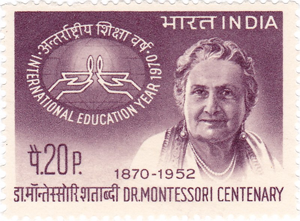 Montessori on a 1970 stamp of India
Montessori on a 1970 stamp of IndiaMaria Montessori and Montessori schools were featured on coins and banknotes of Italy, and on stamps of the Netherlands, India, Italy, Maldives, Pakistan and Sri Lanka.[90]
Educational philosophy and pedagogyMain article: Montessori education
Early influencesMontessori's theory and philosophy of education were initially heavily influenced by the work of Jean Marc Gaspard Itard, Édouard Séguin, Friedrich Fröbel, and Johann Heinrich Pestalozzi, all of whom emphasized sensory exploration and manipulatives.[91][92] Montessori's first work with mentally disabled children, at the Orthophrenic School in 1900–1901, used the methods of Itard and Séguin, training children in physical activities such as walking and the use of a spoon, training their senses by exposure to sights, smells, and tactile experiences, and introducing letters in tactile form.[93] These activities developed into the Montessori "Sensorial" materials.[94]
Scientific pedagogyMontessori considered her work in the Orthophrenic School and her subsequent psychological studies and research work in elementary schools as "scientific pedagogy", a concept current in the study of education at the time. She called for not just observation and measurement of students, but for the development of new methods which would transform them. "Scientific education, therefore, was that which, while based on science, modified and improved the individual."[95] Further, education itself should be transformed by science: "The new methods if they were run on scientific lines, ought to change completely both the school and its methods, ought to give rise to a new form of education."[96]
Casa dei BambiniWorking with non-disabled children in the Casa dei Bambini in 1907, Montessori began to develop her own pedagogy. The essential elements of her educational theory emerged from this work, described in The Montessori Method in 1912 and in The Discovery of the Child in 1948. Her method was founded on the observation of children at liberty to act freely in an environment prepared to meet their needs.[97] Montessori came to the conclusion that the children's spontaneous activity in this environment revealed an internal program of development, and that the appropriate role of the educator was to remove obstacles to this natural development and provide opportunities for it to proceed and flourish.[98]
Accordingly, the schoolroom was equipped with child-sized furnishings, "practical life" activities such as sweeping and washing tables, and teaching material that Montessori had developed herself. Children were given freedom to choose and carry out their own activities, at their own paces and following their own inclinations. In these conditions, Montessori made a number of observations which became the foundation of her work. First, she observed great concentration in the children and spontaneous repetition of chosen activities. She also observed a strong tendency in the children to order their own environment, straightening tables and shelves and ordering materials. As children chose some activities over others, Montessori refined the materials she offered to them. Over time, the children began to exhibit what she called "spontaneous discipline".[99]
Further development and Montessori education todayMontessori continued to develop her pedagogy and her model of human development as she expanded her work and extended it to older children. She saw human behavior as guided by universal, innate characteristics in human psychology which her son and collaborator Mario Montessori identified as "human tendencies" in 1957. In addition, she observed four distinct periods, or "planes", in human development, extending from birth to six years, from six to twelve, from twelve to eighteen, and from eighteen to twenty-four. She saw different characteristics, learning modes, and developmental imperatives active in each of these planes, and called for educational approaches specific to each period. Over the course of her lifetime, Montessori developed pedagogical methods and materials for the first two planes, from birth to age twelve, and wrote and lectured about the third and fourth planes. Maria created over 4,000 Montessori classrooms across the world and her books were translated into many different languages for the training of new educators. Her methods are installed in hundreds of public and private schools across the United States.[100]
Montessori methodMain article: Montessori education
One of Montessori's many accomplishments was the Montessori method. This is a method of education for young children that stresses the development of a child's own initiative and natural abilities, especially through practical play. This method allowed children to develop at their own pace and provided educators with a new understanding of child development. Montessori's book, The Montessori Method, presents the method in detail. Educators who followed this model set up special environments to meet the needs of students in three developmentally-meaningful age groups: 2–2.5 years, 2.5–6 years, and 6–12 years. The students learn through activities that involve exploration, manipulations, order, repetition, abstraction, and communication. Teachers encourage children in the first two age groups to use their senses to explore and manipulate materials in their immediate environment. Children in the last age group deal with abstract concepts based on their newly developed powers of reasoning, imagination, and creativity.[101]
WorksMontessori published a number of books, articles, and pamphlets during her lifetime, often in Italian, but sometimes first in English. According to Kramer, "the major works published before 1920 (The Montessori Method, Pedagogical Anthropology, The Advanced Montessori Method—Spontaneous Activity in Education and The Montessori Elementary Material), were written in Italian by her and translated under her supervision."[102] However, many of her later works were transcribed from her lectures, often in translation, and only later published in book form.
Montessori's major works are given here in order of their first publication, with significant revisions and translations.[103]
• (1909) Il Metodo della Pedagogia Scientifica applicato all'educazione infantile nelle Case dei Bambini
o revised in 1913, 1926, and 1935; revised and reissued in 1950 as La scoperta del bambino
o (1912) English edition: The Montessori Method: Scientific Pedagogy as Applied to Child Education in the Children's Houses
o (1948) Revised and expanded English edition issued as The Discovery of the Child
o (1950) Revised and reissued in Italian as La scoperta del bambino
• (1910) Antropologia Pedagogica
o (1913) English edition: Pedagogical Anthropology
• (1914) Dr. Montessori's Own Handbook
o (1921) Italian edition: Manuale di pedagogia scientifica
• (1916) L'autoeducazione nelle scuole elementari
o (1917) English edition: The Advanced Montessori Method, Vol. I: Spontaneous Activity in Education; Vol. II: The Montessori Elementary Material.
• (1922) I bambini viventi nella Chiesa
o (1929) English edition: The Child in the Church, Maria Montessori’s first book on the Catholic liturgy from the child’s point of view.
• (1923) Das Kind in der Familie (German)
o (1929) English edition: The Child in the Family
o (1936) Italian edition: Il bambino in famiglia
• (1934) Psico Geométria (Spanish)
o (2011) English edition: Psychogeometry
• (1934) Psico Aritmética
o (1971) Italian edition: Psicoaritmetica
• (1936) L'Enfant(French)
o (1936) English edition: The Secret of Childhood
o (1938) Il segreto dell'infanzia
• (1948) De l'enfant à l'adolescent
o (1948) English edition: From Childhood to Adolescence
o (1949) Dall'infanzia all'adolescenza
• (1949) Educazione e pace
o (1949) English edition: Peace and Education
• (1949) Formazione dell'uomo
o (1949) English edition: The Formation of Man
• (1949) The Absorbent Mind
o (1952) La mente del bambino. Mente assorbente
• (1947) Education for a New World
o (1970) Italian edition: Educazione per un mondo nuovo
• (1947) To Educate the Human Potential
o (1970) Italian edition: Come educare il potenziale umano
Notes1. "Highlights from 'Communications 2007/1'". Association Montessori Internationale. Archived from the original on December 14, 2007. Retrieved May 2, 2013.
2. Kramer, 24; Trabalzini, 13
3. Flaherty, T.
4. Trabalzini 7
5. Kramer 27
6. Kramer 31
7. Trabalzini 8
8. Kramer 32–33; Trabalzini 7–8
9. Kramer 34–35; Trabalzini 9–10
10. Kramer 40–41
11. Kramer 47–50
12. Montessori is often described as the first woman doctor in Italy, but in fact Ernestina Paper earned a medical degree in Florence in 1877 and practiced medicine beginning in 1878. (Trabalzini 14)
13. Kramer 52–58; Trabalzini 16–23
14. "Mario Montessori". Sweetwater Montessori School. Retrieved August 31, 2012.
15. Ball, Laura. "Maria Montessori". Psychology's Feminist Voices. Retrieved August 6, 2014.
16. Kramer 58–61; Standing 28; Trabalzini 16–17
17. Trabalzini 18–19; Kramer 73
18. Kramer 78
19. Kramer 84–85
20. Kramer 86; Trabalzini 21
21. Kramer 90
22. Kramer 87
23. Kramer 91; Trabalzini 23–24
24. Kramer 92, 94–95; Trabalzini 39
25. Kramer 95–97; Trabalzini 39–41
26. Kramer 110; Trabalzini 49, 52
27. Kramer 111
28. Trabalzini 53
29. Kramer 111–112
30. Kramer 113–116; Trabalzini 40–47
31. Kramer 115–121; Trabalzini 54–56
32. Montessori, M.
33. Kramer 123–125; Standing 53–54; Trabalzini 56
34. Kramer 126–131; Standing 47–50
35. Kramer 135–136
36. Kramer 137; Trabalzini 57
37. Kramer 147, 150, 155; Standing 58–61; Trabalzini 103–104
38. Kramer 155
39. Kramer 176
40. Kramer 172, 155
41. Trabalzini 107–108
42. Kramer 167
43. Trabalzini 106–107
44. Kramer 174; Trabalzini 103–104
45. Kramer 159, 162–5
46. Kramer 172
47. Kramer 181
48. Kramer 186–202
49. Kramer 212–215
50. Kramer 227–229
51. Kramer 230–231
52. Kramer 246–250
53. Kramer 249–250; Trabalzini 119–120
54. Kramer 269–270
55. Trabalzini 160
56. Kramer 331–333
57. Kramer 251
58. Kramer 267
59. Kramer 323
60. Kramer 305
61. Kramer 235–245
62. Kramer 272
63. Kramer 294
64. Kramer 280–281
65. Kramer 282; Trabalzini 127
66. Kramer 283, 285
67. Kramer 302–304
68. Kramer 326; Trabalzini 156–7
69. Trabalzini 158
70. Trabalzini 158–160
71. Kramer 246; Standing 64
72. Kramer 305–306
73. Kramer 311
74. Trabalzini 157
75. Kramer 330; Trabalzini 173
76. "Nomination Database – Peace". Nobelprize.org. Retrieved June 4, 2011.
77. Kramer 337; Trabalzini 161
78. Kramer 339; Trabalzini 162
79. Kramer 340–341; Trabalzini 165
80. Kramer 342
81. Kramer 306–307
82. Kramer 341–342
83. Trabalzini 165
84. Kramer 345–346; Trabalzini 167–168
85. Kramer 348; Trabalzini 168
86. Kramer 348
87. Kramer 348–355; Trabalzini 169–170
88. Trabalzini 170
89. Kramer 360–367; Trabalzini 170–172
90. Montessori. colnect.com
91. Kramer 59–67
92. Montessori (1938), 17–23
93. Kramer 76
94. Lillard 16
95. Montessori (1938) 28
96. Montessori (1938) 1–3, 28–29
97. Montessori (1938) 62
98. Montessori (1938) 62, 76–77
99. Montessori (1936) 126–138
100. Lillard, P. (1996). Montessori today: a comprehensive approach to education from birth to adulthood. New York: Pantheon Books.
101. Hainstock, Elizabeth G. (1997). The Essential Montessori: An introduction to the woman, the writings, the method, and the movement. New York: the Penguin Group.
102. Kramer 356
103. "A Montessori Bibliography". Montessori Family Alliance. July 13, 2017. Retrieved January 3, 2019.
References• Flaherty, T. "Maria Montessori(1870–1952)". Women's Intellectual Contributions to the Study of Mind and Society. Archived from the original on December 25, 2012. Retrieved December 12, 2012.
• Hainstock, Elizabeth (1978). The Essential Montessori. New York: The New American Library. ISBN 0-451-61695-2.
• Kramer, Rita (1976). Maria Montessori. Chicago: University of Chicago Press. ISBN 0-201-09227-1.
• Lillard, Angeline (2005). Montessori: The Science Behind the Genius. New York: Oxford University Press. ISBN 0-19-516868-2.
• Lillard, Paula Polk (1972). Montessori: A Modern Approach. New York: Schocken Books. ISBN 080520394X.
• Lillard, Paula Polk (1996). Montessori Today. New York: Schocken Books. ISBN 9780805210613.
• Montessori, Maria. The montessori method: Scientific pedagogy as applied to child education in "the children's houses" with additions and revisions by the author. New York: Frederick A. Stokes Company. Retrieved December 12, 2012.
• Montessori, Maria (1948). The Discovery of the Child. Madras: Kalkshetra Publications Press.
• Montessori, Maria (1949). The Absorbent Mind. Madras: Theosophical Publishing House.
• Montessori, Maria (1914). Dr. Montessori's Own Handbook. New York: Frederick A. Stokes Company.
• Montessori, Maria (1912). The Montessori Method. New York: Frederick A. Stokes Company.
• Montessori, Maria (1936). The Secret of Childhood. New York: Longmans, Green.
• Standing, E.M. (1957). Maria Montessori: Her Life and Work. New York: Plume. ISBN 0-452-26090-6.
• Trabalzini, Paola (Spring 2011). "Maria Montessori Through the Seasons of the Method". The NAMTA Journal. 36 (2).
External links• Association Montessori Internationale
• American Montessori Society
• Centre for Montessori Studies (CeSMon), Roma Tre University
• The Maria Montessori No One knows and Maria Montessori in India
• The Centre for Montessori Studies in her native home in Chiaravalle, Italy
• e-text of The Montessori Method by Maria Montessori
• Women's Intellectual Contributions to the Study of Mind and Society
• The Montessori Foundation
• Photos of Maria Montessori (1913–1951)
• Works by Maria Montessori at Project Gutenberg
• Works by or about Maria Montessori at Internet Archive
• Works by Maria Montessori at LibriVox (public domain audiobooks)
• Newspaper clippings about Maria Montessori in the 20th Century Press Archives of the ZBW
